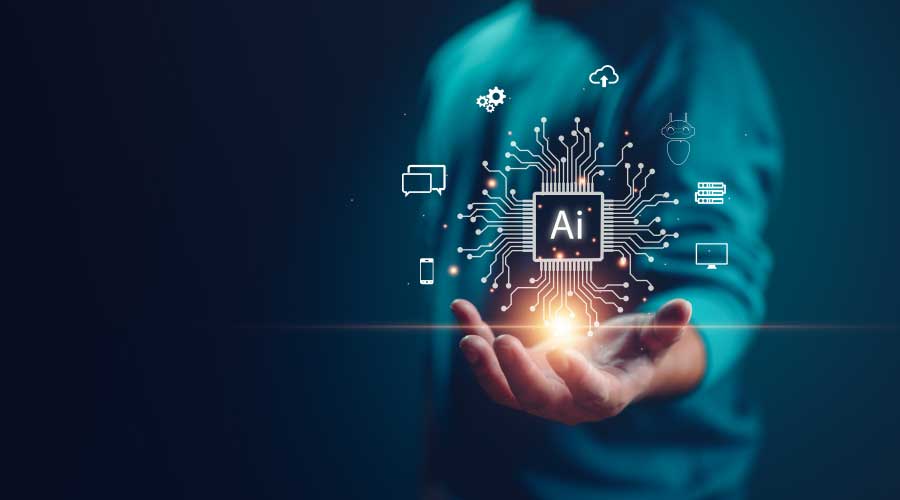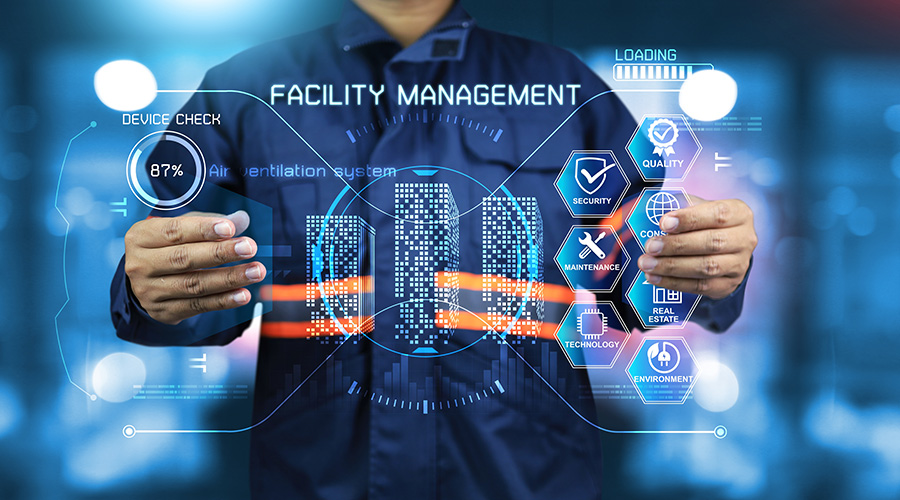5 Ways Facility Managers Can Benefit from AI
While the idea of AI is not new, the way facility managers use it and talk about it continues to advance and change.
By Laurie Gilmer, Contributing Writer
In so many of the conversations I’ve had over the last several months, artificial intelligence (AI) is a hot topic. Whether we’re talking about cyber safety, building performance improvement, getting quick answers from the internet, or the future of the facilities industry, AI seems to always be there.
AI isn’t new. It debuted about 70 years ago. The first noted case was a checkers-playing program that ran on the University of Manchester’s Ferranti Mark 1 computer, according to Artificial Intelligence: A Modern Approach. If you’re a cult classic movie fan, you might remember the fictional computer Joshua in 1983’s War Games (“Shall we play a game?”) that interacted with its user at an almost human-seeming level. Fast forward to IBM’s Watson competing and winning on Jeopardy! in 2011. Later that year, Siri, a remarkably personable sounding voice, was an integral part of Apple’s iPhone. Then in 2014 Amazon released Alexa, another very pleasant AI voice. Here we are, nine years later, navigating the ChatGPT space.
In the facilities world, there tends to be three kinds of responses to AI: fear, typically that humans will be replaced or that computers are taking over (remember HAL from 2001?); fascination, that something manmade could have so much so-called intelligence and be reasonably relatable; or indifference and apathy.
Regardless of your personal take on AI, it’s here. While the idea of AI is not new, the way facility managers use it and talk about it continues to advance and change. One of the big questions for the facilities industry is, How do we use AI to help us? Let’s walk through a few key areas.
1.) Physical security
AI can recognize images. Those images in turn might be used to unlock features. Think of computer systems that use facial recognition to ensure the right person is gaining access.
That’s just the beginning. Images are also being used to identify potential threats and create alert responses. At a recent security system demonstration, I saw the way the system can differentiate among moving objects, such as vehicles, bicycles and people.
Rules could be written to look for only certain types of moving objects. Virtual perimeters could be established that could initiate actions if, for example, a vehicle took a particular path or drove a certain direction. Initiated actions might be to start recording and tracking the vehicle or to send an alert. The same could happen with a person.
Well beyond passive surveillance, the system can identify people, as well as whether the people were in areas they should or should not be in. It could identify door access tailgating – a sometimes challenging security breach to catch.
In one remarkable example, the system distinguished between a person sitting on the floor, which is perhaps unusual in a business environment, and a person lying on the floor – an indicator of potential distress. The system not only enhanced physical security for the facility but also understood if a person was in trouble.
2.) Structural monitoring
Managers rely on visual inspection and testing to help them understand the way infrastructure and existing buildings are aging. While these are helpful tools, the use of sensors coupled with AI offers increased ability to monitor changes over time on a continual basis. Movement that contributes to physical degradation and leaks can be detected earlier than what might be apparent in a visual inspection alone.
For example, a facilities acquaintance was concerned about a unique, large window system. There was no question about whether movement would happen. The question was how much movement could be tolerated, and how would one know when or if problematic movement was taking place? You could periodically monitor for leaks, but would it be too late by then?
Today’s sensor technology and the use of AI to monitor movement and change in condition is helpful in detecting potential issues before they become real issues.
3.) Building systems controls
HVAC systems play a huge role in facilities. They provide heating and cooling and are charged with maintaining air quality, all so we can be comfortable and productive. They must respond actively to continuously changing occupant load, outdoor conditions and ventilation needs. They are responsible for the majority of too-hot and too-cold complaints, and they typically account for the largest controllable cost in facilities.
One example of machine learning we already employ is optimized start. Based on prior performance, the energy management system learns when to start HVAC systems to reach temperature by a defined time, providing thermal comfort while saving energy by avoiding unnecessary run time.
As we see more equipment installed with smart technology and using AI-equipped controls, we will have a better ability to monitor occupant levels so we can provide the right balance of ventilation and thermal control to achieve thermal comfort and operational efficiency.
4.) Customer service
Call any large business these days, and it’s likely that the first voice you hear will be an automated one that invites you to navigate the menu options. That used to be the primary place we encountered this technology. Now smart technology is everywhere.
In facilities, we use voice recognition for basic tasks, including writing and sending messages and accessing programs. Could voice recognition technology be used to handle customer requests? Sure.
Much like call center routing, facilities customers might soon find themselves logging complaints and making service requests through virtual assistants, which would turn those requests into facility work orders.
5.) Data analytics
Facility management systems hold a lot of data from work orders, customer service requests and preventive maintenance activities. Over time, we develop a feel for the way buildings work. We understand the systems that need attention and when, as well as the types of requests certain people are likely to have. This feeling is essentially what AI is learning when we employ it. Our systems are learning to think like us, helping to identify where to employ resources based on existing system knowledge.
Years ago, a facility manager told me about the way a particular pump kept failing. It was unusual in his experience for that type of failure to occur that often. The pump had been replaced at least twice. With the size of campus he managed, that pump would have been easy to miss.
He investigated and found that the issue was not with the pump but with the way it was being maintained. He was able to address it. That is a good example of a facility manager who knew his campus and equipment down to the fine details. Not all of us can be like that.
This is where AI can help. Using a combination of data mining and machine learning, AI can help spot unusual trends, such as premature failure and increasing maintenance activities, and bring these issues to the forefront where the managers and technicians can address them more quickly.
Facilities already are using AI. It hasn’t taken the place of humans but has instead given us more tools to run our facilities well. With continued advances in technology and the ability to integrate systems, managers should see more functionality that will enable facilities to be safer, more productive and more efficient.
Laurie Gilmer is president and COO of FEA, which provides asset management, strategic planning and financial analysis services to facilities. She is the immediate past chair of IFMA’s Global Board of Directors and serves as IFMA's liaison to the Building Industry Decarbonization Collaborative.
Related Topics:












